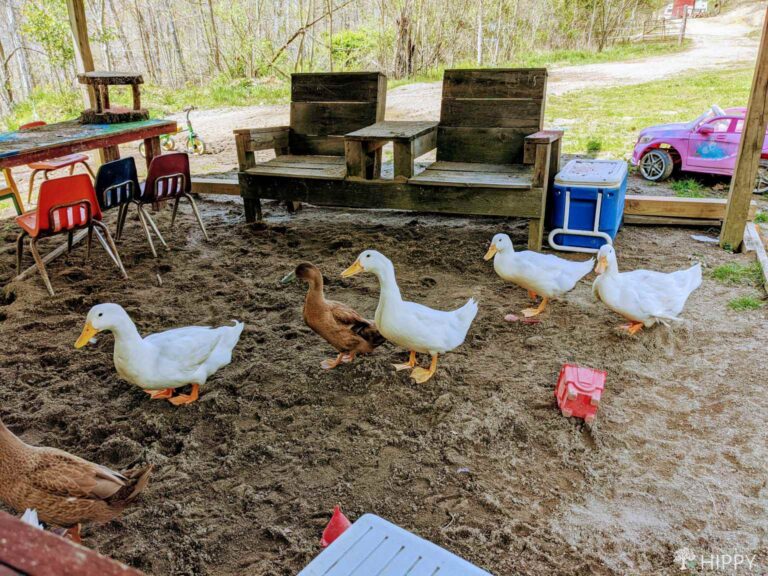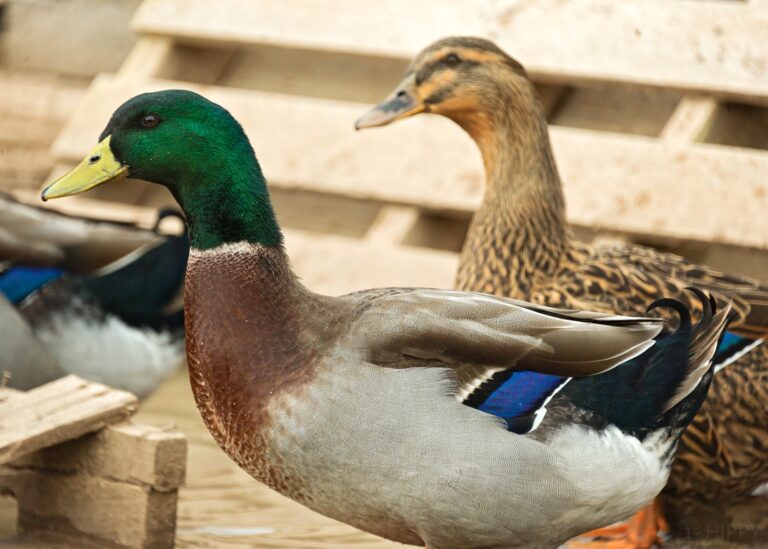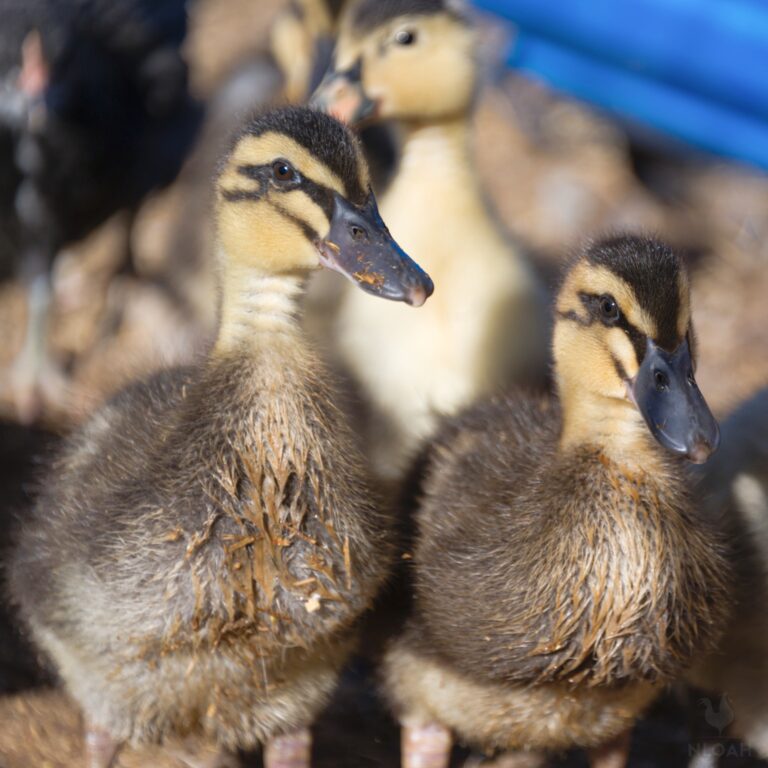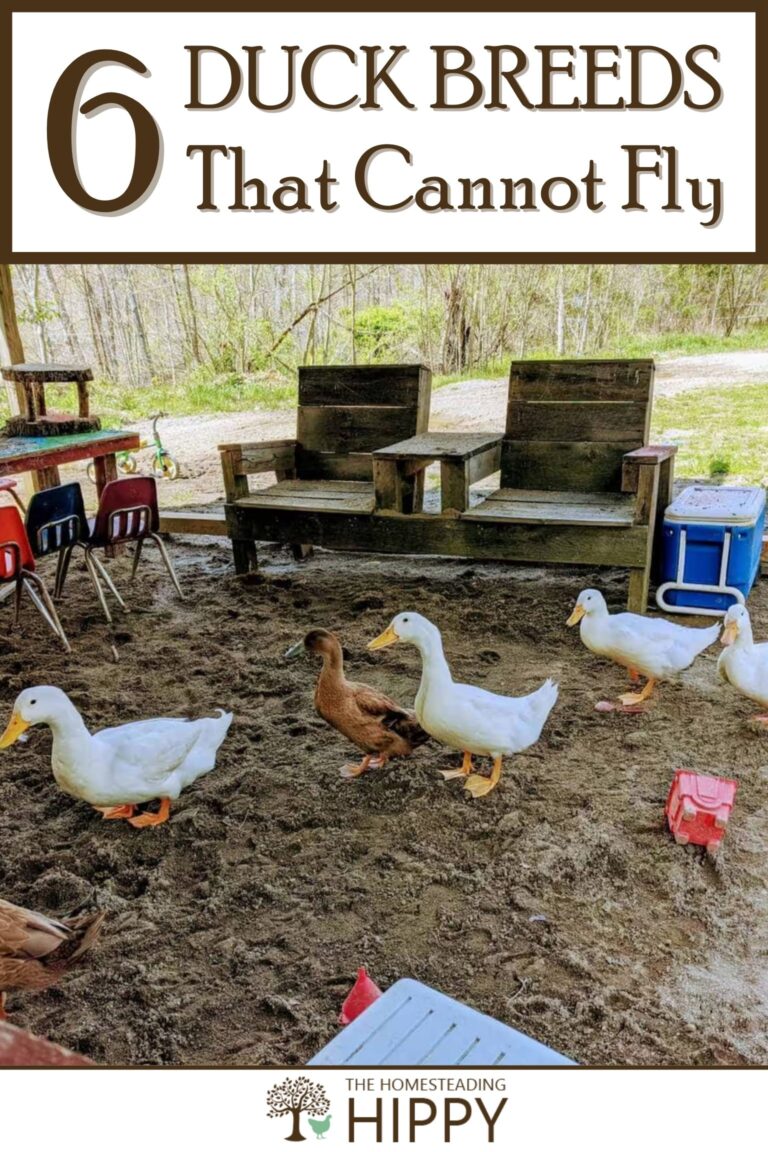It is no revelation that ducks can fly. Of course they can! When people think of ducks, they naturally think of them sitting serenely on the water or flying through the air.

Simple as that! But if you’re afraid that your ducks will take off while free-roaming, I have some good news for you. What would you say if I told you that there are some ducks that, naturally, cannot fly at all? Impossible? Crazy? It’s true!
Some domesticated ducks are incapable of flight for a variety of reasons, and this might be of particular interest to farmers and homesteaders who would prefer to keep their ducks safely where they are supposed to be instead of taking off into the wild blue yonder.
In this article we will be examining 6 duck breeds that cannot fly, along with an overview of their essential characteristics.
Table of Contents
Why Can’t These Ducks Fly?
It seems unthinkable that a duck would not be able to fly. As hard as it is to believe, it is true, and for a number of reasons, most of which have to do with man’s interference with the makeup of these domesticated species.
Over time and through successive generations, ducks that possessed better characteristics as livestock were chosen to mate.
This could be anything from particular beauty to egg-laying capability or even sheer size, which would equal more meat.
Traits that generally were not selected for include aptitude at flying and small size, which contributes heavily to a duck getting and staying airborne.
Ducks that had strong migratory or exploratory instincts were also deselected, as any duck that tended to fly off was not given the opportunity to reproduce in domestic settings.
In this way, the ability to take flight was bred out of these particular duck breeds. The direct physical consequence of this breeding is greater weight and underdeveloped flight muscles.
When a duck is too heavy, it struggles to get airborne no matter how strong its wings and muscles are.
It might be capable of limited flight or only frantic, flapping “hops”. Some ducks are so big and heavy that they cannot take flight at all.
Similarly, domestic ducks often have underdeveloped or otherwise lackluster flight muscles which means their wing beats are just not as swift or powerful as wild species.
Greater weight and weaker flapping mean these ducks have a ground-bound existence.
While there are some domesticated ducks that are capable flyers, those on this list definitely are not, and farmers and homesteaders should take note.
6 Duck Breeds That Cannot Fly
1. Cayuga Duck
The Cayuga duck is a domestic breed that was developed in New York in the early 19th century. It is named for Cayuga people that inhabited the region. Cayugas are all black with an emerald-greenish sheen, and their feet are also notably black in color.
Beautiful and showy, these marvelous specimens were once bred primarily for meat, though this practice is greatly diminished in our era. Their feathers are often used in millinery, however.
Compared to some other ducks on this list Cayuga’s are on the large side, averaging anywhere from 6-8 pounds.
The Cayuga is a calm duck that likes to have a known home range and so is unlikely to even attempt flight or escape, but it is worth mentioning that younger ducks, females especially, might be capable of true if limited flight.
2. Ancona Duck
The Ancona duck is another domesticated breed that was developed in Europe, this time in England where it was suspected to have been bred concurrently with Magpie ducks.
Anconas are generally a middleweight compared to other domestic ducks, only averaging 5-6 pounds.
This makes them better flyers than some of the larger breeds (notably when young!), but they are still not great at it and tend to stay close to the ground or to fly on in emergencies.
One of the most popular backyard breeds, it’s used raised primarily for meat and especially for eggs.
Healthy hens can crank out more than 250 a year, very impressive! In addition to their traditional uses, they are commonly kept as a pet for their even temperament and sometimes as a showbird.
They are easily identified by their slightly concave bill and typical dappled or “broken” white plumage with black patches. Other color morphs include blue, brown, silver, or even lavender, all with white as above.
3. Pekin Duck
The Pekin duck is the most common domestic duck in the world, and probably what most people think of when they picture a “duck”.
These guys were originally bred in China for their meat and feathers before being shipped to Germany and finally brought to the United States in 1872.
They have since become the most popular breed of duck raised commercially for meat in North America. They are used less often for eggs since they don’t lay many per year compared to other breeds.
Pekins are whoppers, typically weighing between 9-10 pounds, making them one of the largest domestic breeds. They are all white in color with stereotypical orange bills and feet.
Their immense size and relatively small wings make flight difficult, though not truly impossible.
They are known to get airborne in some phases of their lives, most often when fully developed but not yet fully grown- keep an eye on adolescents and don’t hesitate to clip their wings!
4. Buff Orpington Duck
The Buff Orpington duck is another dual-purpose domestic breed, developed in England in the late 19th century for both meat and egg production.
In taste, Buff Orpingtons are considered among the most delicious, though usually rated after Pekins.
They are larger ducks, typically weighing between 7-8 1/2 pounds, with a broad and athletic build, and a graceful head and neck. This makes them among the heaviest of the “layers” on this list.
As their name suggests they are most often buff colored with yellow-tan bills and feet, though they can also come in white and blue varieties, the latter rather rare.
These ducks grow quickly, are hardy and offer a lot to seasoned breeders and backyard keepers alike.
Their size and underdeveloped flight muscles means that they are a minimal flight risk, and tall fences are often enough to keep them securely in place. Occasional specimens might require their wings clipped, however.
5. Indian Runner Duck
Indian Runners are unique ducks thanks to their posture and gait more than anything else. They have a mostly upright body position that is entirely unlike most other ducks, and instead of an awkward waddle when on land these ducks can trot or flat-out run!
Their long, slender necks and legs give them a somewhat comical appearance that has endeared them to many people over the years.
They also happen to be entirely flightless and also quiet- they make far less noise than other ducks, and their quacks are little more than a rough whisper.
This breed was developed in Indonesia and Malaysia for egg production, and it is still used for that purpose today: females can lay more than 300 eggs in a single year, which is frankly an immense number for any bird, much less a duck.
They are considered medium-small ducks in weight, averaging 3 1/2 to 5 pounds, with hens typically on the smaller end of that range.
Indian Runners come in many colors including white, fawn, chocolate, silver, and black among others.
The most common variety by far is white and brown in the typical “runner” pattern, however. A unique duck to be sure, but one with unique charms to match.
6. Rouen Duck

The Rouen duck is another big domestic breed of duck that was developed in France. It is believed it was originally created for show or for its meat, and even today it remains popular as a roaster duck.
However, their relatively slow growth rate makes them less than ideal for egg production, though many people do still keep them for that purpose.
Due to their versatility, Rouens might be said to be a general-purpose breed. The bird’s large size of 6 to 8 pounds and stocky build often prevents meaningful flight, making this classic breed easy to contain.

What really sets the Rouen apart from other ducks is its coloring. These are among the most beautiful of all ducks, with males boasting rich chestnut brown plumage and females being a more subdued grayish-brown. Both sexes have pale gray or charcoal bills and feet.
While not nearly as popular or plentiful as some other breeds meant for mass production of meat or eggs, they nonetheless remain a great choice for duck enthusiasts.
There is a Flightless Breed for Every Need
No matter what your purpose for keeping ducks- be it eggs, meat, show, or simply as backyard pets– there is probably a flightless breed that is ideal for you.
If you’re in the market for some new and feathered but flightless friends, why not give one of these breeds a try?

Tom has built and remodeled homes, generated his own electricity, grown his own food and more, all in quest of remaining as independent of society as possible. Now he shares his experiences and hard-earned lessons with readers around the country.
Find out more about the team here.
